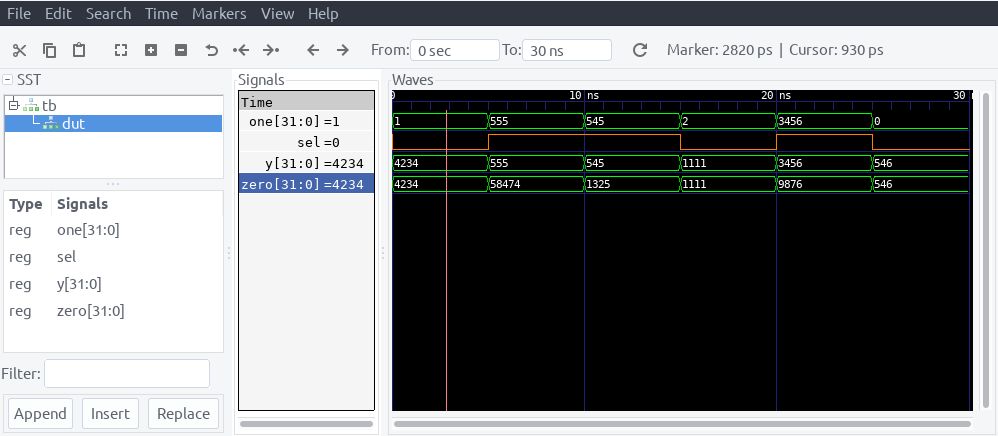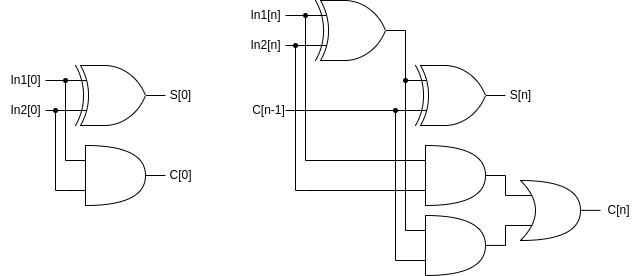➔ Index of ⦁ Introduction to Digital Electronics ⦁
VHDL simulation
How to run a test-bench simulation with GHDL and analyse signals through GTKwave
GHDL simulation
Let's place the three files written in previous articles in the same directory and open a terminal instance there.
Type the following two commands: if everything goes fine, you shouldn't see any output on the screen
0 1
ghdl -a -fsynopsys mux21_behl.vhd ghdl -a -fsynopsys tb.vhd
Be sure that the name you used in entity definition is te same used as file name for both files. Now you have to create an executable containing both testbench instructions and devuce under test description; to do this, type
0
ghdl -e -fsynopsys tb
Now you can run the simulation and generate an output file, so type
0
ghdl -r -fsynopsys tb --vcd=output.vcd
In your working directory you should see two new files: a .cf and a .vcd file. Ignore the first one, the second one contains simulation data.
The '-fsynopsys' additional parameter is necessary since in the testbench file I imported std_logic_arith library, that is a legacy library from Synopsys.
GTKwave signal inspection
Open GTKwave from terminal or start menu. The interface is quite intuitive, however I'll explain something here. Go to File>Open New Tab and select the .vcd file, you will see the project structure on the left tab and the simulation result on the right.

Let's take a look to to the values written in the timing diagram (if numbers are written as hex, convert them to decimal by clicking with right mous button on each of them and selecting Data Format>Decimal): you should see that Y bus follows the input 'one' or 'zero' according to the state of 'sel' signal. This is exactly how a multiplexer works: it propagates to its output the value of the selected input, discarding the other one.
Transition are made every 5ns, that is the amount of time specified in the testbench file, between one input update and the next one.
Navigate
Comments
Be polite and respectful in the comments section. In case of doubts, read this before posting.
Posted comments ⮧
Very simple course but explained very well! IMHO it's a perfect introduction for people looking for a quick and easy approach to this matter :)
INDEX
INFO
STATISTICS
PREVIOUS ARTICLE
CONTACTS
SHARE









